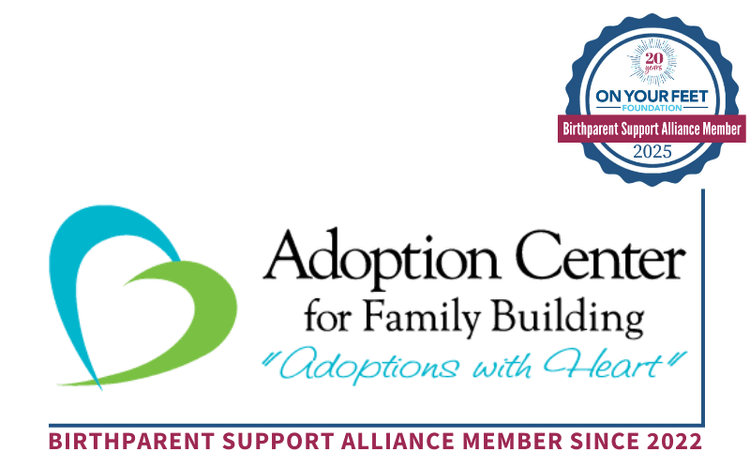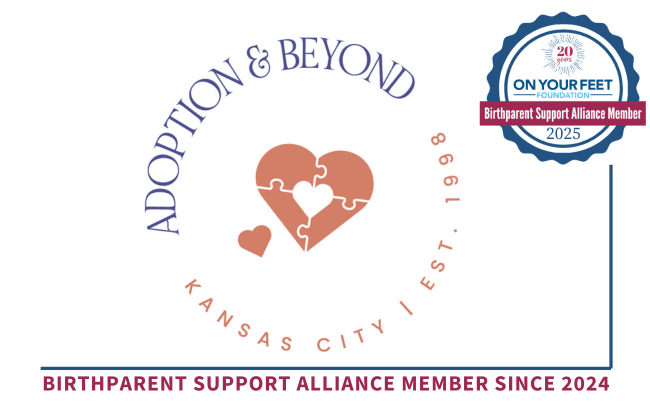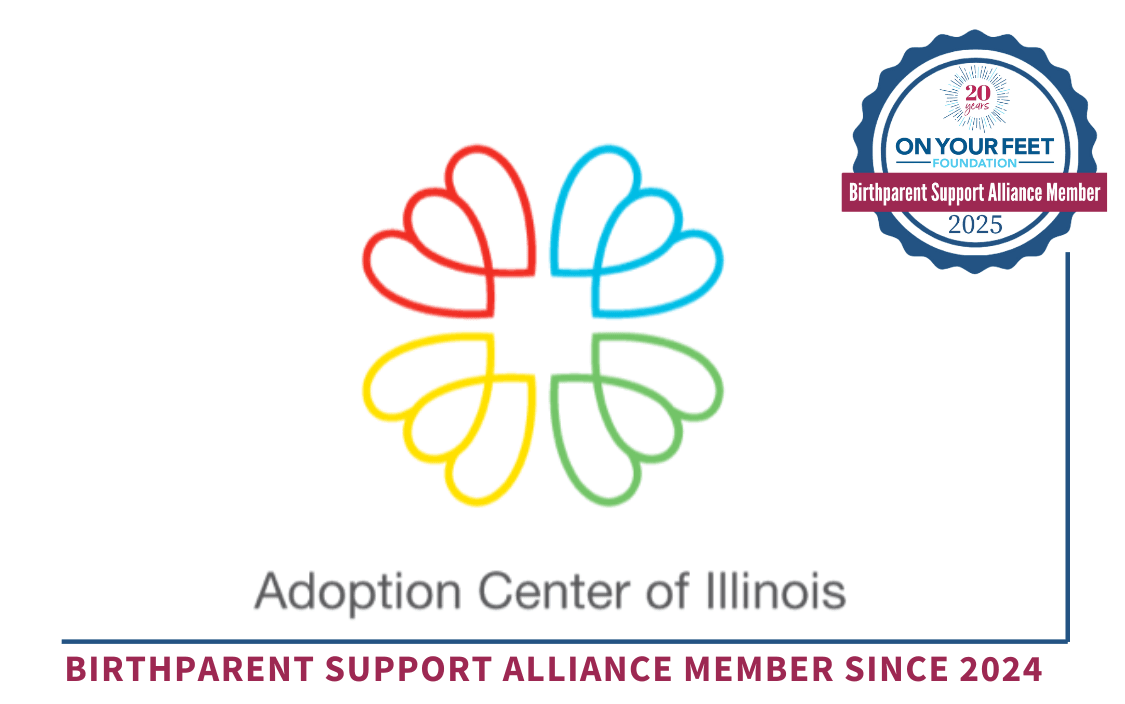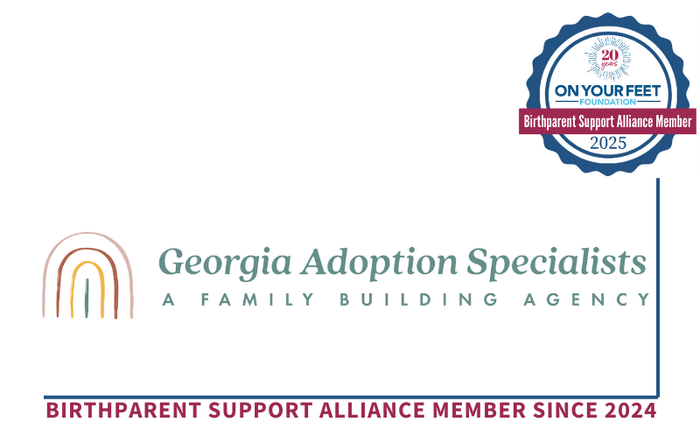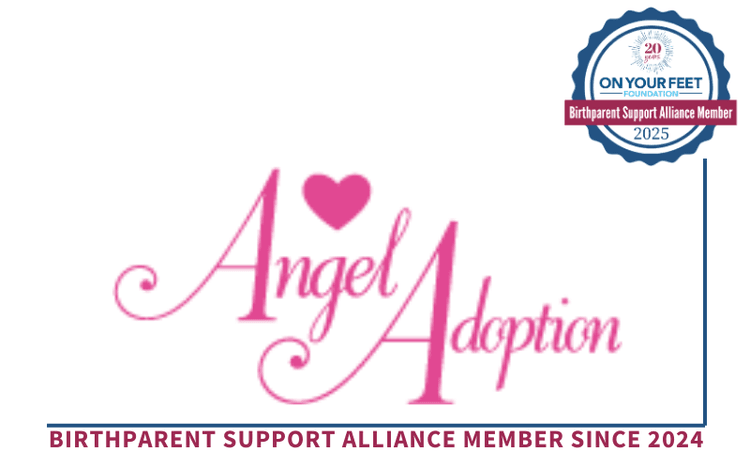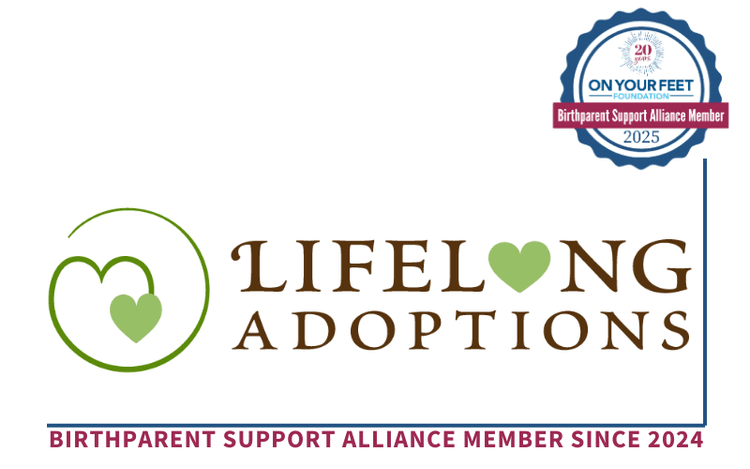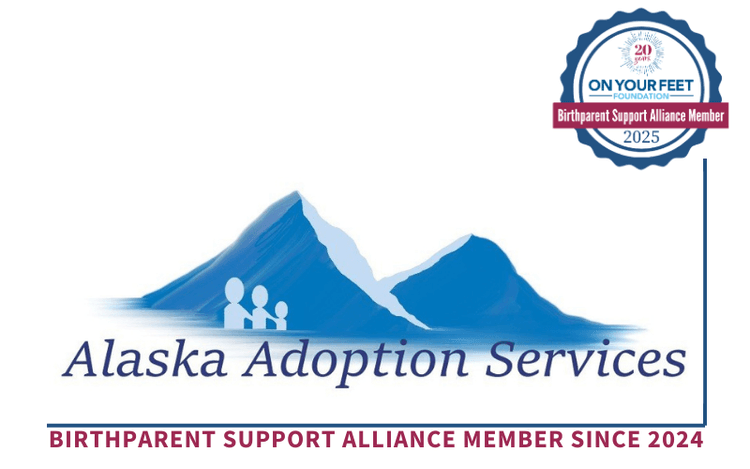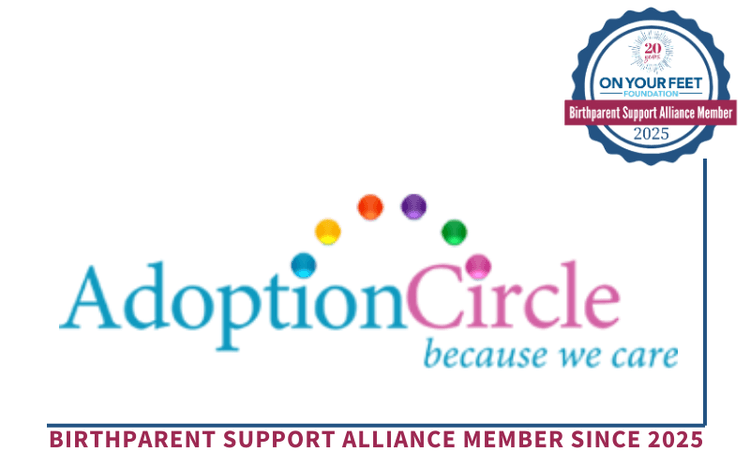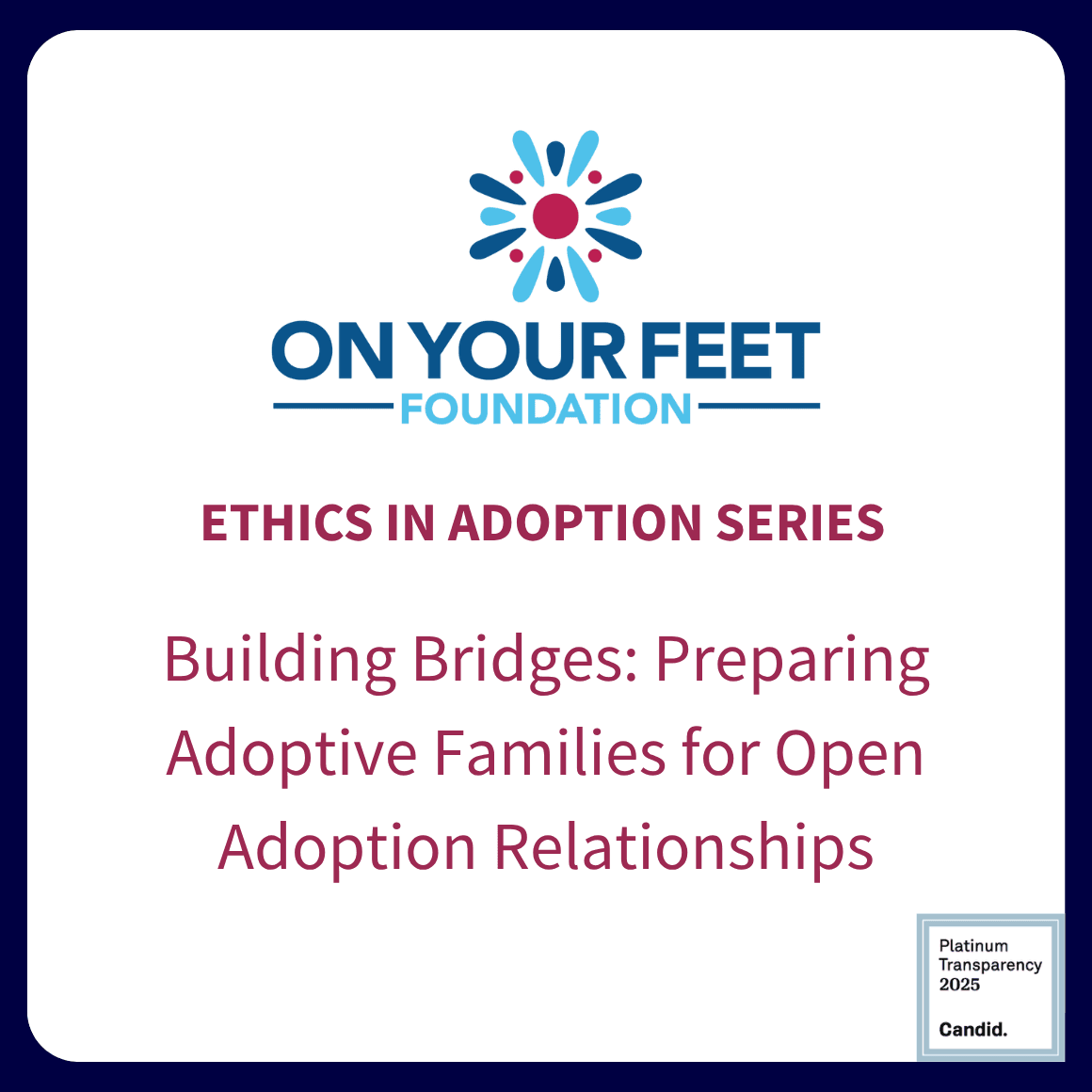
Drawing on decades of research, along with the lived experiences of the thousands of birthparents we have supported over the past twenty-five years, our staff talks candidly about what it really takes to build a long-lasting and healthy open adoption relationship between birthparents and adoptive parents. We are not just describing the general landscape of adoption; we are handing adoptive parents and adoption professionals a comprehensive guide filled with the evidence-based tools and best practices needed to transform good intentions into healthy, child-centered adoption relationships.Whether you're a professional seeking to truly serve the families you support, an adoptive family navigating complex feelings of anxiety and inadequacy, or a birthparent struggling with unexpected grief, we provide the honest, practical guidance needed to make open adoption work for everyone—especially the children at the heart of these relationships.
Part 1: Understanding the Emotional Landscape of Open Adoption
Open adoption offers opportunities for ongoing connections between birth families, adoptive families, and children. However, many adoptive families are often not fully prepared for the emotional and relational complexities that come with these relationships. This three-part article explores key considerations and best practices to support healthy, lasting connections.
The Complex Web of Feelings
Adoptive families entering open adoption relationships navigate a sophisticated emotional terrain that extends far beyond traditional parenting preparation. Research demonstrates that adoptive parents experience a range of complex emotions, including gratitude, anxiety, insecurity, protectiveness, and sometimes jealousy or competition with birthparents. These feelings are normal and expected, yet many families report feeling unprepared for their intensity or duration.
Sarah and Mark had dreamed of adoption for years. When they were matched with Jessica, a 22-year-old college student, they felt grateful and excited about the prospect of an open relationship. But six months after placement, when Jessica sent a lengthy text expressing how much she missed baby Emma and wished she could see her more often, Sarah found herself lying awake at night feeling threatened and inadequate. "I know I should be grateful," she confided to her support group, "but sometimes I feel like I'm just the babysitter until Jessica decides she wants her back."
Birthparents, meanwhile, face their own emotional journey that adoption professionals increasingly recognize as requiring specialized understanding. Postpartum Mood and Anxiety Disorders, also sometimes referred to as postpartum depression, include depression, anxiety, and adjustment difficulties that persist long past placement, and is a pregnancy complication that impacts an estimated 1 out of every 5 women (or more than 750,000 women) who give birth annually in the United States, with estimates indicating that PMAD is a $14 billion problem (On Your Feet Foundation, 2024). However, PMAD is typically diagnosed by a pediatrician, which means that birthing people who place their child for adoption are not assessed, since they do not see a pediatrician following the birth of their child. Adoptive mothers are screened for PMAD at well-baby visits; birthmothers are not. This creates a critical gap in care, as birthparents are at higher risk for developing PMAD due to the trauma of a crisis pregnancy and placing their child for adoption.
Three months after placement, Jessica found herself unable to get out of bed some mornings. The photos Sarah sent of Emma's first solid foods triggered an unexpected wave of grief. "I thought I'd processed this," she told her counselor. "But seeing her reach those milestones without me there... it's like losing her all over again." Jessica's undiagnosed PMAD made it difficult for her to respond to Sarah's texts consistently, which Sarah interpreted as disinterest rather than mental health struggles.
The Intersection of Grief and Growth
Open adoption relationships exist at the intersection of loss and hope for all parties involved. Birthparents grieve the loss of their daily parenting role— relinquishment happens for a number of reasons, including lack of resources, both real and perceived, lack of support, or as a genuine choice—while simultaneously holding love and concern for their child's wellbeing in another family. Adoptive parents may struggle with feelings of inadequacy or fear of judgment while simultaneously wanting to honor their child's origins. Children benefit from understanding their story and maintaining connections, though they may struggle to understand complex adult emotions and decisions, particularly when secrecy or shame surrounds their adoption story.
When 4-year-old Aiden asked his adoptive parents why he couldn't live with "Mama Kim" (his birthmother), his parents Lisa and David felt their hearts break. They'd maintained regular contact with Kim since placement, but Aiden's developmental stage brought new questions they hadn't anticipated. "We want him to love Kim and understand she chose us because she loved him," Lisa explained, "but how do we help him understand why families look different without making him feel rejected?
The issue is not that the child is asking; it’s whether adoptive parents are prepared to face their own discomfort. So many missteps in open adoption stem from adoptive parents not being ready to work through feelings of inadequacy, grief, or loss of control. The instinct is to protect, which sometimes leads to pulling back from openness, or trying to create a bubble where the questions won’t surface. Adoptive parents need guidance before and after a child joins the family to de-center themselves, to see family in a more expansive way, and to stay present with their children even when their questions are painful. This emotional complexity requires preparation that goes beyond logistics and legal frameworks to address the psychological and relational skills necessary for healthy long-term relationships.
Evidence-Based Benefits When Done Well
Research spanning three decades demonstrates clear benefits of well-managed open adoption relationships. Studies by researchers like Harold Grotevant and Ruth McRoy through the Minnesota/Texas Adoption Research Project show that children in open adoptions demonstrate better adjustment, stronger identity formation, and reduced fantasy about birthparents (Grotevant & McRoy, 1998). Birthparents in ongoing contact report less grief and regret, while adoptive parents develop greater empathy and security in their parenting role over time.
However, these benefits depend heavily on the quality of preparation and ongoing support provided by adoption professionals. When agencies and attorneys fail to adequately prepare families, relationships may struggle or deteriorate, potentially negating these positive outcomes.
Understanding these dynamics is only the first step. The real work, and often, the most challenging part, begins after placement, when promises made during the adoption process are put to the test. At the heart of many ongoing relationships is one crucial element: the Post-Adoption Contact Agreement (PACA). How these agreements are understood, honored, and supported can mean the difference between a relationship that fosters healing and one that deepens hurt.
Part 2: The Truth About Post-Adoption Contact Agreements and Building Emotional Intelligence
Honoring Post-Adoption Contact Agreements (PACAs)
Post-Adoption Contact Agreements (PACAs) are not legally binding contracts; instead, they are promises built on trust. PACAs represent moral commitments and expressions of intent that require careful preparation and ongoing support, despite their lack of legal enforceability in most jurisdictions. The distinction between legal enforceability versus trust-based promise is crucial, as many adoption professionals mislead expectant parents by implying or directly stating that PACAs are legally binding contracts, creating false expectations, and when those promises are later broken, when contact is limited or cut off entirely, the consequences are devastating: a deep sense of betrayal, compounded grief, and lifelong trauma that could have been prevented with honesty from the start.
The Harm of Misrepresentation
Marcus and Jennifer signed a PACA promising monthly visits and regular photo updates when they placed their son Tyler with another family. Their agency presented the document as "legally binding," and they based their decision partly on this promised ongoing relationship. Two years later, when the adoptive family moved across the country and gradually stopped responding to calls and texts, Marcus and Jennifer discovered they had no legal recourse. "We feel completely powerless," Jennifer shared. "Not only did we lose our daily relationship with Tyler, but now we've lost him completely. The promises meant nothing."
When agencies and attorneys present PACAs as legally enforceable documents, they create a foundation of deception that undermines trust from the very beginning of the adoption process. If expectant parents make their adoption decisions based partly on promises of ongoing contact that have no legal backing, they may end up suffering the loss of their child twice: once, at placement, and again when they realize they have no enforceable way to maintain contact with their child. When adoptive families subsequently close adoptions or drastically reduce contact—as research shows happens to a significant percentage of open adoption relationships—birthparents experience not only the loss of relationship with their child but also the additional trauma of broken promises they believed were protected by law. For birthparents, this misrepresentation compounds the grief and powerlessness that birthparents already experience, adding feelings of betrayal and legal helplessness to their emotional burden. The psychological impact can be severe and long-lasting, contributing to depression, anxiety, and difficulty trusting future relationships.
Reframing PACAs as Moral Commitments
Agencies and attorneys must be transparent about the voluntary nature of PACAs while still emphasizing their moral and ethical significance. These agreements should be presented as sacred promises—commitments made in good faith that reflect the adoptive family's genuine intentions to honor their child's connections and the birth family's ongoing love and concern.
Preparation should help adoptive families understand that while they cannot be legally compelled to maintain contact, they are making promises to vulnerable people during one of the most difficult decisions of their lives. The weight of this moral commitment should be thoroughly explored, including honest discussions about circumstances that might challenge their ability to maintain contact and how they would handle such situations ethically.
Building Authentic Commitment Rather Than Legal Compliance
Before placement, one family spent months in counseling exploring their motivations for open adoption. When their social worker asked what they would do if their future child's birthmother experienced mental health challenges, Maria replied, "We'd support her in getting help, not cut her off. This is about our daughter's connection to her story, not about our comfort level." Five years later, when birthmother Stephanie was struggling with undiagnosed PMAD, the family helped connect her with appropriate mental health resources while continuing to send updates and photos, maintaining their commitment to the relationship.
Since PACAs cannot be legally enforced, successful open adoption relationships depend entirely on the adoptive family's genuine commitment to maintaining connection. Professionals must help adoptive families develop this authentic commitment through deep preparation that includes:
- Understanding the profound impact that contact has on birthparents' healing and the child's identity development.
- Recognizing that their willingness to honor contact agreements reflects their integrity and commitment to their child's well-being.
- Developing realistic expectations about the challenges they may face and problem-solving strategies that preserve relationships rather than ending them.
Professionals must help adoptive families develop the emotional intelligence and communication skills necessary to navigate inevitable changes collaboratively rather than unilaterally. This includes understanding when and how to seek mediation or professional support when challenges arise, rather than simply closing the adoption when difficulties occur.
Developing Emotional Intelligence for Open Adoption: Core Competencies for Adoptive Parents
Successful open adoption relationships require specific emotional intelligence competencies that many adoptive parents have never been taught to recognize or develop:
Self-Awareness: Understanding one's own triggers, insecurities, and emotional responses to contact with birth family members. This includes recognizing when feelings of competition or inadequacy may be driving reactions rather than the child's best interests.
When birthmother Ashley posted photos on social media of a day out with friends, adoptive mother Rachel felt a surge of anger. "She's out having fun while we're dealing with sleepless nights," Rachel thought. Through counseling, Rachel learned to recognize this response as her own exhaustion and insecurity talking, not a legitimate criticism of Ashley's right to rebuild her life after placement.
Empathy and Perspective-Taking: Developing a genuine understanding of birthparents' experiences, including their grief, love for the child, and ongoing parental feelings despite not parenting daily. This empathy must extend to understanding how cultural, economic, or personal circumstances may have influenced their adoption decision.
Emotional Regulation: Learning to manage intense emotions in ways that don't damage relationships or communicate rejection to birth family members. This includes developing skills for processing feelings privately while maintaining respectful communication publicly.
Communication Skills: Building abilities to have difficult conversations with grace, express appreciation authentically, and navigate boundary discussions without defensiveness or blame.
When birthfather James expressed frustration about not hearing from his son’s adoptive family for several weeks, adoptive father Robert's first instinct was to get defensive about their busy schedules. Instead, he took time to consider James's perspective: "I realized that what felt like a few busy weeks to us might feel like abandonment to someone who's already experienced the loss of daily contact with his son. We worked out a communication schedule that worked for everyone."
Commitment and communication are vital, but they aren’t enough on their own. Birthparents often face unseen struggles, like perinatal mood and anxiety disorders, that can shape the entire adoption journey. In the next section, we’ll explore how understanding and supporting birthparent mental health isn’t just compassionate—it’s essential for building strong, lasting open adoption relationships that truly benefit everyone involved.
Part 3: Supporting Birthparent Mental Health and Transforming Practices
Understanding Birthparent Mental Health Challenges and Recognizing PMAD Symptoms
Adoption professionals must better prepare adoptive families to recognize and respond appropriately to signs of perinatal mood and anxiety disorders in birthmothers. One in five mothers/birthgivers will experience a Perinatal Mood and Anxiety Disorder (PMAD), which you may have heard referred to more colloquially as postpartum depression (PPD) (On Your Feet Foundation, 2021). However, most birthmothers are not screened adequately, or at all, and that lack of care impacts every member of the adoption constellation.
These conditions can manifest as:
- Persistent sadness or mood changes
- Excessive worry about the child's well-being
- Difficulty making decisions about contact
- Social withdrawal or isolation
- Changes in sleep or appetite patterns
- Expressions of guilt, shame, or inadequacy
Three months after placing her daughter Zoe, birthmother Tanya began experiencing severe anxiety attacks whenever she saw families with babies in public. She stopped responding to texts from Zoe's adoptive parents because seeing photos triggered panic attacks. The adoptive family initially worried that Tanya was losing interest, but their well-prepared counselor helped them understand that withdrawal often indicates mental health struggles, not disengagement.
Appropriate Responses and Boundaries
Instead of taking Tanya's silence personally, the adoptive family reached out through their counselor. They sent a gentle message: "Tanya, we know this journey isn't easy. We're here when you're ready, and we want you to get the support you need. Zoe is doing well, and your place in her life is secure." They continued sending monthly updates without expecting responses, giving Tanya space to heal while maintaining connection.
Preparation should help adoptive families understand that while they may observe symptoms, they are not responsible for providing mental health treatment. Instead, families need skills to:
- Respond with compassion rather than judgment
- Maintain appropriate boundaries while expressing concern
- Know when and how to connect birthparents with professional resources
- Continue honoring contact agreements while prioritizing everyone's well-being
- Communicate with adoption professionals about concerning changes
How Professionals Must Evolve Their Preparation Practices
Traditional adoption preparation often focuses on providing information about open adoption rather than building skills and emotional capacity. Professionals need to shift toward experiential learning approaches that help families practice difficult conversations, explore their own emotional responses, and develop realistic expectations for relationship dynamics.
Moving Beyond Information Delivery
Some programs have implemented role-playing exercises where prospective adoptive parents practice responding to challenging scenarios. In one exercise, prospective parents practice how to respond when a birthmother calls crying because she's experiencing symptoms of undiagnosed PMAD and is struggling with the level of contact she initially wanted. "Before this exercise," said one participant, "I would have panicked and probably said something hurtful. Now I have actual words and strategies."
Ongoing Support Rather Than Front-End Preparation
One adoptive family's relationship with birthmother Crystal has evolved significantly over eight years. What started as monthly visits became weekly phone calls when Crystal began experiencing mental health challenges and needed additional support, then returned to in-person visits as Crystal received appropriate treatment and care. "Our agency's ongoing support helped us navigate every transition," explains the adoptive mother. "Without that guidance, we might have given up during the difficult periods."
Open adoption relationships evolve over decades, requiring ongoing support rather than one-time preparation. Professionals should establish systems for:
- Regular check-ins with all parties
- Access to adoption-competent, birthparent-centered counseling
- Support groups where families can share experiences and learn from others navigating similar relationships
- Mediation services for when conflicts arise
- Crisis intervention during mental health emergencies
Training Staff in Trauma-Informed Care
Staff need comprehensive training in trauma-informed practices that recognize the impact of separation trauma on all members of the adoption constellation. This includes understanding how trauma may affect birthparents' capacity for relationship engagement and helping adoptive families respond appropriately to trauma-related behaviors.
Cultural Competency and Anti-Oppression Work
Open adoption preparation must address how racism, classism, and other forms of oppression impact adoption relationships. Professionals need to help adoptive families examine their own biases and develop skills for navigating relationships across differences with humility and respect.
Practical Recommendations for Transformation
Readiness Assessment
Professionals should develop more sophisticated assessment tools that evaluate prospective adoptive families' emotional readiness for open adoption relationships, not just their desire for openness. This includes assessing communication skills, emotional regulation capacity, and willingness to engage in ongoing learning and growth.
Skill-Building Workshops
Preparation should include hands-on workshops where families practice scenarios they're likely to encounter, such as:
- Recognizing and responding supportively when a birthmother shows signs of PMAD
- Responding when a birthparent requests changes to contact agreements
- Handling a child's questions about their birth family
- Managing their own emotions during birthparent mental health crises
- Communicating across cultural, racial, geographic, and economic differences
Mentorship Programs
Connecting prospective adoptive families with experienced open adoption families can provide invaluable real-world perspective and ongoing support. These relationships should be facilitated and supported by trained professionals.
Professional Development
Professionals must invest in ongoing training in areas including mental health, trauma, cultural competency, and family systems dynamics. Staff should understand their role as long-term relationship facilitators rather than transaction coordinators.
The Path Forward
Creating successful open adoption relationships requires professionals to fundamentally reimagine their role from placement facilitators to long-term relationship coaches. This shift demands significant investment in staff training, program development, and ongoing support systems. Yet the evidence clearly shows that these investments pay dividends in stronger, healthier relationships that benefit children, birth families, and adoptive families for generations.
The adoption field has made tremendous progress in recognizing the benefits of openness. Now professionals must rise to meet the challenge of providing the sophisticated preparation and support that these complex relationships require. Only through this evolution can we ensure that open adoption fulfills its promise of creating expanded, loving families built on foundations of mutual respect, understanding, and genuine care for the children at the center of these relationships.
When adoption professionals commit to this deeper level of preparation and support, they create the conditions for open adoption relationships that truly serve everyone involved—relationships characterized by resilience, growth, and the kind of authentic connection that allows children to thrive with full knowledge of their story and secure attachment to all the adults who love them.
References
On Your Feet Foundation. (2021). One in five mothers/birthgivers will experience a Perinatal Mood and Anxiety Disorder (PMADS). Retrieved from https://onyourfeetfoundation.org
On Your Feet Foundation. (2024). Postpartum Mood and Anxiety Disorder (PMAD) white paper. Retrieved from https://onyourfeetfoundation.org




